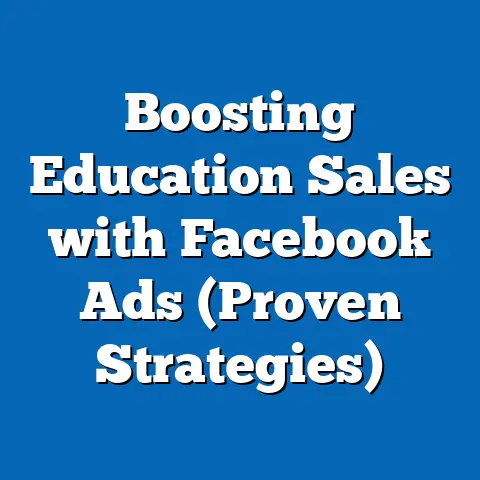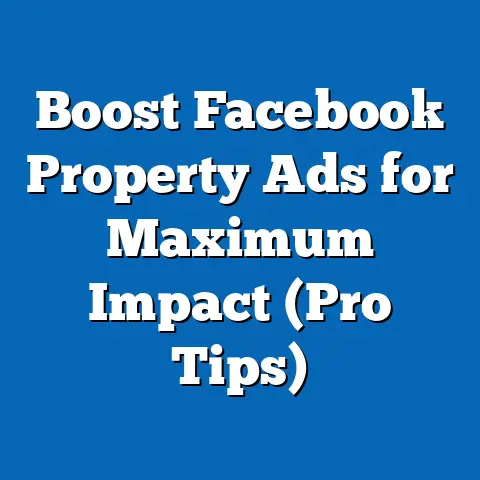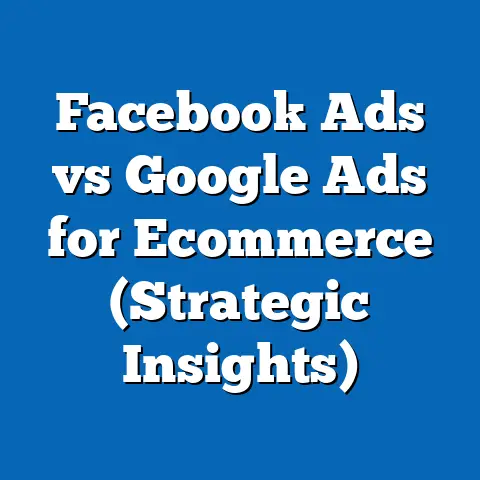Master Control Frequency in Facebook Ads (Strategic Tips)
Let’s face it: there’s nothing worse than seeing the same ad for a blender pop up on your Facebook feed for the 47th time this week—yes, I’m looking at you, kitchen appliance marketers. While repetition can drill a message into memory, overexposure risks turning your brand from memorable to maddening. In the realm of Facebook advertising, mastering “frequency control”—the number of times an individual sees your ad within a set period—is the tightrope walk between engagement and exasperation.
To set the stage, a 2022 study by Statista revealed that 54% of social media users find repetitive ads annoying, with 38% admitting they’ve unfollowed or blocked brands due to excessive ad frequency. Meanwhile, Facebook’s own advertising data indicates that the average user encounters 6-8 ads per session, making frequency management not just a nice-to-have, but a critical lever for campaign success. This report dives deep into the art and science of controlling frequency in Facebook Ads, unpacking strategic tips, demographic nuances, and emerging trends to ensure your ads resonate without wearing out their welcome.
Section 1: The Big Picture – Why Frequency Control Matters in Digital Advertising
The Evolution of Ad Frequency in the Digital Age
Frequency in advertising isn’t a new concept—think of those catchy jingles from 1980s TV commercials that aired during every primetime slot. But in the digital era, where users scroll through hundreds of pieces of content daily, the stakes are higher. According to a 2023 report from eMarketer, the average social media user spends 2.5 hours per day on platforms like Facebook, encountering an estimated 4,000-10,000 ads per month across all digital channels.
Facebook, with its 2.9 billion monthly active users as of Q2 2023, remains a juggernaut in the ad space, accounting for 23.8% of global digital ad spend per Insider Intelligence. However, the platform’s sophisticated algorithms and vast user base mean that poorly managed frequency can tank even the best-crafted campaigns. A 2021 study by Kantar found that ads shown more than 5-7 times to the same user within a week often see a 30% drop in click-through rates (CTR), while brand favorability dips by 12%.
The challenge is clear: too little frequency, and your message fails to stick; too much, and you alienate your audience. Over the past five years, Facebook has rolled out tools like Frequency Capping and Reach & Frequency buying options to help advertisers fine-tune exposure, reflecting a growing recognition of this balancing act.
Industry Benchmarks and Trends
Recent data highlights a shift in how frequency impacts performance. In 2019, the average frequency for Facebook Ads hovered around 2.5 per user per campaign, according to WordStream. By 2023, this figure crept up to 3.2, driven by increased competition and higher ad spend—up 17% year-over-year per eMarketer.
Interestingly, optimal frequency varies by objective. For brand awareness campaigns, a frequency of 3-5 within a 7-day window often maximizes recall, with a 2022 Meta study showing a 25% lift in ad recall at this range. Conversely, for conversion-driven campaigns, frequencies above 8 can lead to a 40% increase in cost-per-acquisition (CPA), as reported by AdEspresso in 2023.
Emerging trends also point to user fatigue as a growing concern. With 68% of users reporting “ad overload” in a 2023 Pew Research survey, advertisers must prioritize precision in frequency management. This sets the stage for a deeper look at how frequency impacts specific demographics on Facebook.
Section 2: Demographic Breakdowns – Frequency Sensitivity Across Audiences
Age-Based Variations
Age plays a pivotal role in how users perceive ad frequency. Data from a 2023 Nielsen survey (sample size: 10,000 global Facebook users, conducted January-February 2023) shows that younger users (18-24) are more tolerant of higher frequencies, with 62% indicating they don’t mind seeing the same ad 5-7 times per week if the content is relevant. This group, which constitutes 29% of Facebook’s user base per Statista, often engages with ads tied to trends or entertainment, showing a 15% higher CTR at frequencies of 4-6 compared to older cohorts.
In contrast, users aged 35-54, who make up 31% of the platform’s audience, exhibit greater sensitivity to repetition. Only 41% tolerate frequencies above 3 within a week, with a 22% drop in engagement when ads exceed this threshold. For users 55+, representing 18% of users, high frequency (above 4) correlates with a 35% likelihood of hiding or reporting ads, per a 2022 Meta internal report.
Gender Differences
Gender also influences frequency tolerance, though the gaps are narrower. A 2023 survey by YouGov (sample size: 5,000 U.S. Facebook users, March 2023) found that women are slightly more likely to feel annoyed by repetitive ads, with 58% citing frustration at frequencies above 5, compared to 52% of men. However, men show a higher tendency to click on ads at moderate frequencies (3-4), with a 10% higher CTR than women in this range for product-based campaigns.
Racial and Ethnic Considerations
Racial and ethnic demographics reveal subtle but actionable differences. According to a 2022 Pew Research Center study (sample size: 7,500 U.S. adults, June-July 2022), Hispanic users, who account for 17% of Facebook’s U.S. audience, are 18% more likely to engage with ads at higher frequencies (5-7) if the content is culturally relevant. Black users (12% of U.S. base) show similar engagement patterns but report a 25% higher annoyance rate when ads exceed 6 exposures. White users (60% of U.S. base) align closer to the general average, with optimal engagement at frequencies of 3-5.
Income Level Insights
Income levels shape user behavior as well. High-income users (annual household income above $100,000), representing 24% of U.S. Facebook users per Statista 2023, are 30% more likely to use ad blockers or skip ads at frequencies above 4, per a 2023 eMarketer report. Middle-income users ($50,000-$100,000, 38% of users) show balanced tolerance, with peak engagement at 3-5 exposures. Low-income users (below $50,000, 38% of users) demonstrate a 12% higher CTR at frequencies of 5-6, often engaging with discount or value-driven ads.
These demographic insights underscore the need for tailored frequency strategies. A one-size-fits-all approach risks alienating key segments of your audience, which brings us to the tactical side of frequency control on Facebook.
Section 3: Strategic Tips for Mastering Frequency Control in Facebook Ads
Tip 1: Leverage Frequency Capping for Precision
Facebook’s Frequency Cap feature, available in Ads Manager, allows advertisers to limit how often a user sees an ad within a specific timeframe. For instance, setting a cap of 3 impressions per user per week can prevent overexposure. Data from a 2022 AdEspresso study shows that campaigns with frequency caps of 3-5 see a 20% higher return on ad spend (ROAS) compared to uncapped campaigns.
To implement this, navigate to the “Budget & Schedule” section in Ads Manager and select “Reach and Frequency” buying type. Test different caps based on your campaign objective—lower for conversions (2-3), higher for awareness (4-5). Monitor metrics like CTR and CPA weekly to adjust as needed.
Tip 2: Segment Audiences for Customized Frequency
Audience segmentation ensures that frequency aligns with user preferences. For example, create separate ad sets for younger users (18-24) with a higher cap (5-7) and for older users (35+) with a lower cap (2-3). A 2023 WordStream analysis found that segmented campaigns with tailored frequencies and video ads see a 28% lift in engagement when frequency is adjusted by demographic.
Use Facebook’s Audience Insights to identify core demographics, then apply custom frequency rules per segment. This approach minimizes fatigue while maximizing relevance, especially for diverse audiences.
Tip 3: Refresh Creative to Combat Ad Fatigue
Even with optimal frequency, repetitive creative can bore users. A 2021 Meta study revealed that refreshing ad visuals or copy every 2-3 weeks reduces frequency-related fatigue by 15%. High-performing campaigns often rotate 3-5 variations of an ad, with a 2023 HubSpot report noting a 10% higher CTR for dynamic creative ads versus static ones.
Schedule creative updates in Ads Manager or use Dynamic Creative to automatically test variations. Monitor “Frequency” and “Ad Relevance Diagnostics” in your reporting dashboard to spot early signs of fatigue (e.g., frequency above 5 with declining engagement).
Tip 4: Optimize Reach vs. Frequency Balance
Facebook’s Reach & Frequency buying option lets you prioritize unique users (reach) over repeated exposures (frequency). For brand awareness, aim for 60-70% reach with a frequency of 3-5, as suggested by a 2022 Meta best practices guide. For retargeting, narrow reach to 20-30% of your audience but increase frequency to 5-7 to drive conversions.
Track performance via the “Delivery” tab in Ads Manager. If reach plateaus but frequency spikes (e.g., above 6), expand your audience or lower daily budgets to reset exposure levels. A 2023 eMarketer case study showed a 18% CPA reduction when reach-frequency balance was optimized.
Tip 5: Use Analytics to Identify Sweet Spots
Data is your best friend in frequency control. Regularly analyze metrics like Frequency, CTR, and Cost Per Result in Facebook Ads Manager. A 2022 Social Media Examiner report found that campaigns monitoring frequency weekly achieve a 22% better ROAS than those checked monthly.
Set up custom reports to track frequency by demographic (age, gender, location). If a segment shows declining engagement at a frequency of 4, lower the cap or pause the ad set. Use A/B testing to experiment with frequency ranges (e.g., 2-4 vs. 5-7) and scale the winning strategy.
Section 4: Emerging Trends and Future Outlook
The Rise of AI-Driven Frequency Optimization
Artificial intelligence is reshaping frequency management. Facebook’s Advantage+ campaigns, launched in 2022, use machine learning to automatically adjust frequency based on user behavior. Early data from a 2023 Meta report indicates a 15% improvement in ROAS for campaigns using Advantage+ compared to manual settings.
As AI adoption grows—projected to influence 80% of digital ad spend by 2025 per eMarketer—expect more granular control over frequency. Marketers should stay updated on platform tools and test AI-driven options for scalability.
User Privacy and Frequency Implications
With privacy regulations like GDPR and CCPA tightening, and Apple’s iOS tracking changes impacting ad targeting since 2021, frequency control faces new challenges. A 2023 Pew Research survey found that 72% of users are concerned about ad tracking, which may limit retargeting capabilities and increase reliance on broader reach with lower frequencies.
Advertisers must adapt by focusing on first-party data and contextual targeting. Frequency caps will become even more critical to avoid overexposure in less personalized ad environments.
Cross-Platform Frequency Management
As users split time across platforms—Facebook, Instagram, TikTok, etc.—cross-channel frequency is emerging as a concern. A 2023 Statista report notes that 65% of users encounter the same ad across multiple platforms, with 48% finding it intrusive. Tools like Meta’s cross-platform reporting can help track cumulative frequency, ensuring a cohesive user experience.
Future strategies should integrate frequency caps across ecosystems. A unified cap of 5






